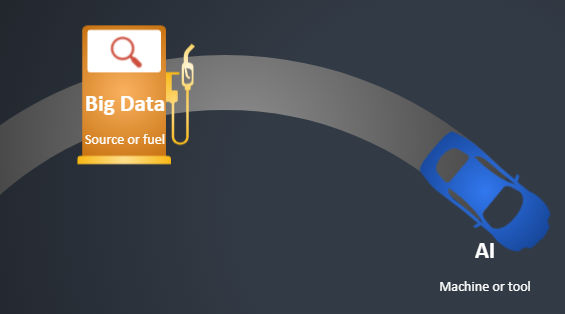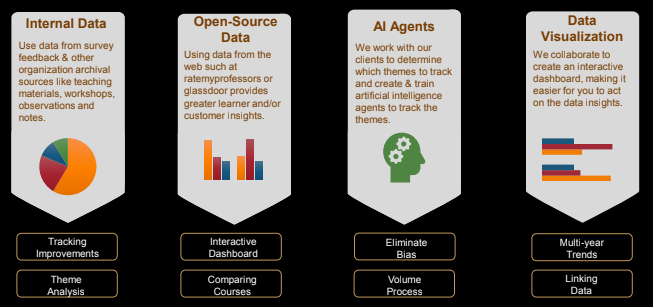AI Provided the Learning Facts…Now What?

To answer this question, we must first understand the basics of big data and its relationship with AI. According to the dictionary, big data is “extremely large data sets that may be analyzed computationally to reveal patterns, trends, and associations, especially relating to human behavior and interactions”. These data sets are larger and more complex than those that can be analyzed by teams of personnel in a timely, efficient manner. AI has a mutually beneficial, cooperative relationship.
Big data is the source of information or fuel that drives the AI ‘machine’. In order for AI to grow and learn, it needs vast amounts of big data to provide the reliable analytics results that lead to strategic decisions.
Where AI and Learning Analytics Meet

Where does learning analytics fit into the relationship? After gathering all the big data, AI completes the analysis for an organization’s learners or learner program. The resulting findings equate to the Learning Analytics.
These findings involve many types of data and analysis which include internal data, open-source data, use of AI agents, and data visualization. Each of these areas focus on allowing AI to provide more in-depth insights for organizations.
How to Use the Data & Analytics
At the conclusion of the AI driven learning analytics solutions, our team provides reports as needed with details and summaries of the analyses based on our team’s experience and knowledge. This pairing of learning experience with data scientists and data analysts experience provides a winning combination.
QAA has an example Learning Analytics Solution that is based on a fictional university setting comparing two instructors. Based on this dashboard, we have created two reports, a short version and full version, for review. The short version is a simple summary of the findings. Organizations may request this type of report bi-weekly or monthly. The full version includes not only a summary of the findings but also suggestions for next steps.
By using these reports, organizations have the potential to shape the outcomes of their future. How? In the case of these reports, what did learners say about the course in surveys compared to open-source data? How did this impact assessment scores? How could this impact enrollment if this data was added?
Our Learning Analytics Solution may be adjusted to meet most learning analytics needs. Contact us to learn more.
“Listening to the data is important… but so is experience and intuition. After all, what is intuition at its best but large amounts of data of all kinds filtered through a human brain rather than a math model?” ~Steve Lohr

